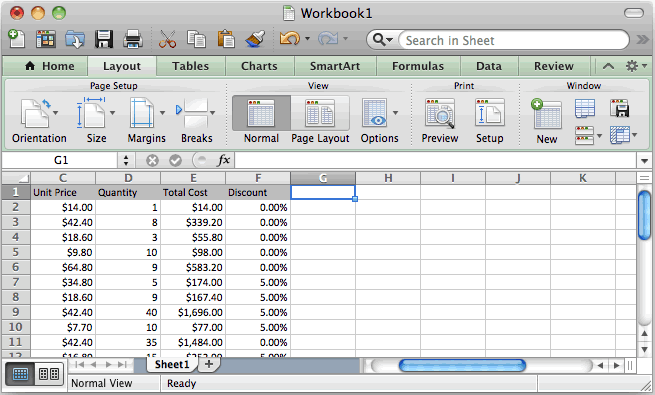

Go to the Formulas tab, in Defined Names group, click Use in Formula, and then select the defined name you want to add.įor more information on using defined names, see Define and use names in formulas. Keep the cursor in the formula syntax at the point where you want to add the name you just created. The next part is to add the name in the formula. You need to make sure you have a compatible version of MS Excel such as 2011 Service Pack 1 (SP1) or 2016 (version 15.30 or higher). If you want to clear the content of the selected cell or range, just press the delete key.

#Microsoft excel for mac 2011 not maximizing full#
On the Formulas tab, in the Defined Names group, click Define Name, and then click Define Name.įor the Scope, select if you want the name to be available within the sheet only, or the entire workbook. Meaning, if you click on Zoom on the taskbar it will only display that small window and not the full screen window. Windows users will rejoice that Windows key assignments like Ctrl+O for Open, Ctrl+F for Find and Ctrl+C for Copy now also work in the Mac versionno need to remember to press Cmd instead of Ctrl. If you want to create a new range, you can skip this step. Instead, label each image with a figure number and use that for references. Do not distinguish between images by referring to their appearance (e.g., the bigger one). Instead use Word for Mac’s Track Changes feature to track changes. If you already have the data in the spreadsheet, and want to assign a name to specific cells or a cell range, first select the cells in the spreadsheet. Do not track changes by simply changing the colour of text you have edited and noting the colour. Solution: Define a name in Name Manager, and then add the name to the formula. See the following example of a SUM function referring to Profit, which is an undefined name in the workbook. When your formula has a reference to a name that is not defined in Excel, you will see the #NAME? error.


 0 kommentar(er)
0 kommentar(er)
